The Week of the Brick
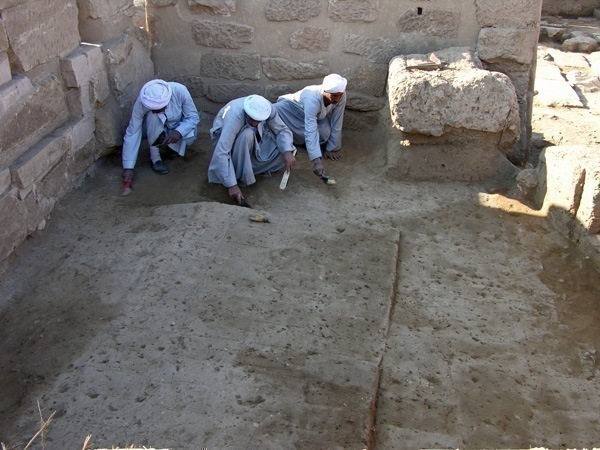
Tracing mud brick takes skill, patience and lots of scraping and brushing. It is paying off for Ayman and his team, though. By Tuesday, they had already uncovered quite a bit of brick in the center of the square north of the Taharqa Gate. This is surely the enclosure wall into which the Taharqa Gate was set, but we can’t yet connect it to the gate directly.

The lighter area in the center of the photo is the brick as it was on Wednesday. The row of 5 bricks visible here against the center of Chapel D confirms that this chapel was built against the east face of the Taharqa Gate enclosure wall as we’d always assumed. There is more brick in the gap to the north but at a lower level.

Even when you can see bricks clearly, the faint color differences between brick, mortar and surrounding earth can make them hard to photograph, particularly in strong sunlight. A large bedsheet makes a good shade cloth, providing even, subdued light where needed.
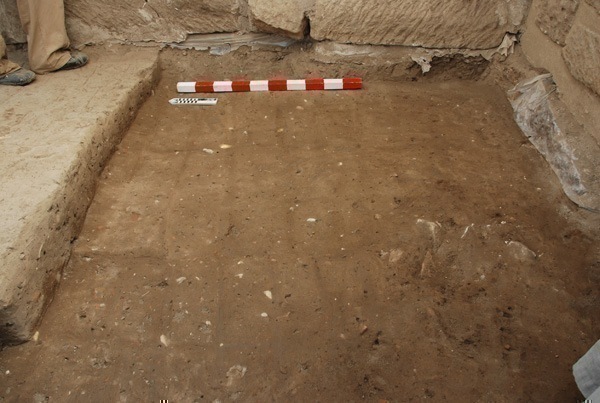
And here’s what’s in the shade. By Thursday at noon, Ayman had found brick in the corner where the Taharqa Gate (right) and Chapel D meet, although at a lower level than the brick in the center of the square. This is definitely the Taharqa Gate enclosure wall, beautifully built of large bricks laid in even rows.
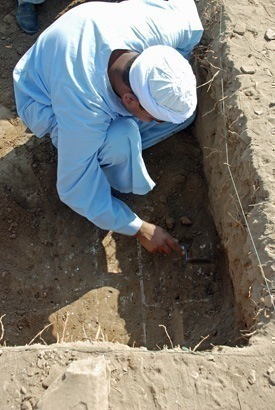
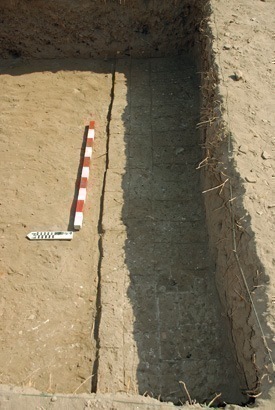
After slogging through more than 50 cm of loose earth, Abdel Aziz, too, found brick on the south side of his square on the rise west of the Taharqa Gate. Here the problem was the dryness of the soil, which makes the brick extremely friable. Despite the distinctive white mortar this brick was a bit tricky to define as it was almost as dry (and soft) as the earth around it.
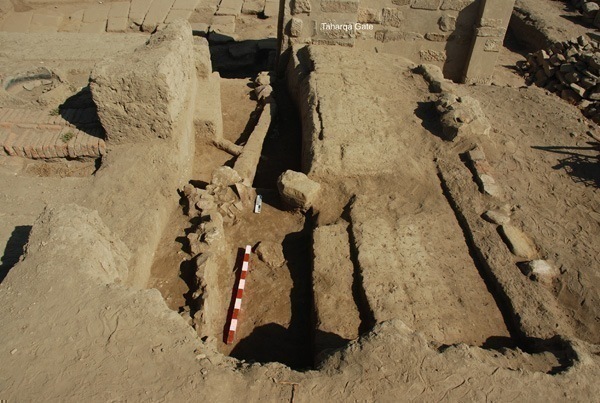
South of the Taharqa Gate, in a probable corridor between the Taharqa Gate wall and the wall to its west, we have come on a narrow diagonal brick wall running almost 4 meters along the space, its purpose unknown. It sits on a layer of earth with lots of limestone chips and at its south end the brick is extended by a rough row of small pieces of limestone (to the left of the meter stick).
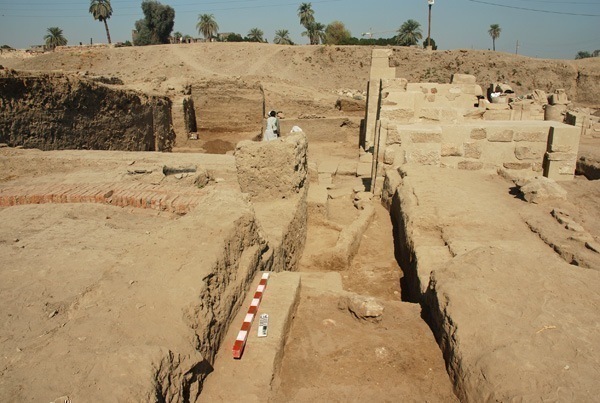
The same area at the end of the week. Below the limestone blocks was another row of brick (under the meter stick) built against the corridor’s west wall. Just visible to its north and at a lower level is another patch of brick that was built on the same layer of limestone chips as the diagonal wall to the north.
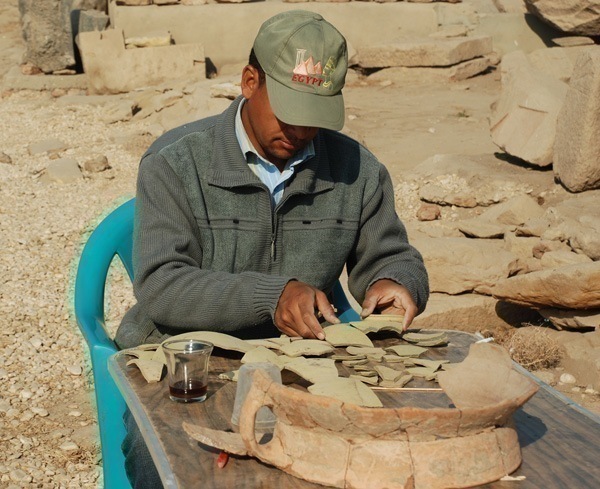
Conservator Khaled Mohamed Wassel is back with us for another season. He has spent most of the past week reconstructing some thoroughly broken pottery, a task he is doing with patience and good will. We hope to have more interesting work for him in the coming weeks.
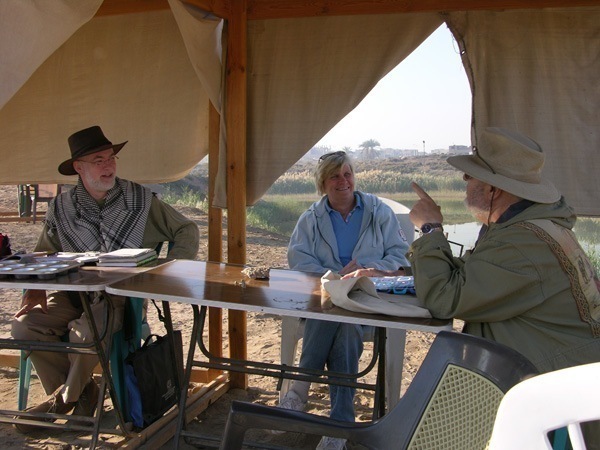
Another treat this week was seeing Dr. Betsy Bryan, director of the Johns Hopkins University excavation, who is out for a short time this winter. She, Richard and Jaap catch up on news about work at the site.

And here are our most regular visitors, who stop by every day to see what is going on. I suspect, however, that they are more interested in the camel thorn and reeds than in the temples.

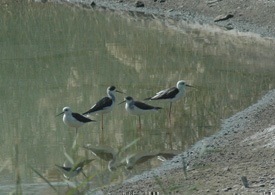
To end the week, here are two more terrific bird photographs from Jaap. On the left, a female kestrel soars overhead. On the right, a family of black-winged stilts that lives on the shore of the sacred lake. The two in the center are juveniles, the other two adults.
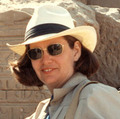
Mary McKercher holds a BA in Ancient Near Eastern Studies (specializing in Egypt) from the University of Toronto and is also a trained archaeologist. In 1979 she joined the Brooklyn Museum’s expedition to the Precinct of the Goddess Mut at South Karnak as photographer and archaeologist, roles she continues to fill. She has contributed to the Mut Expedition’s “Dig Diary” since it began in 2005, and put together the photographs for the 8 Mut Expedition photo sets on the museum’s Flickr site. With her husband, Richard Fazzini, she has also researched and written about the West’s ongoing fascination with ancient Egypt, commonly known as Egyptomania.
